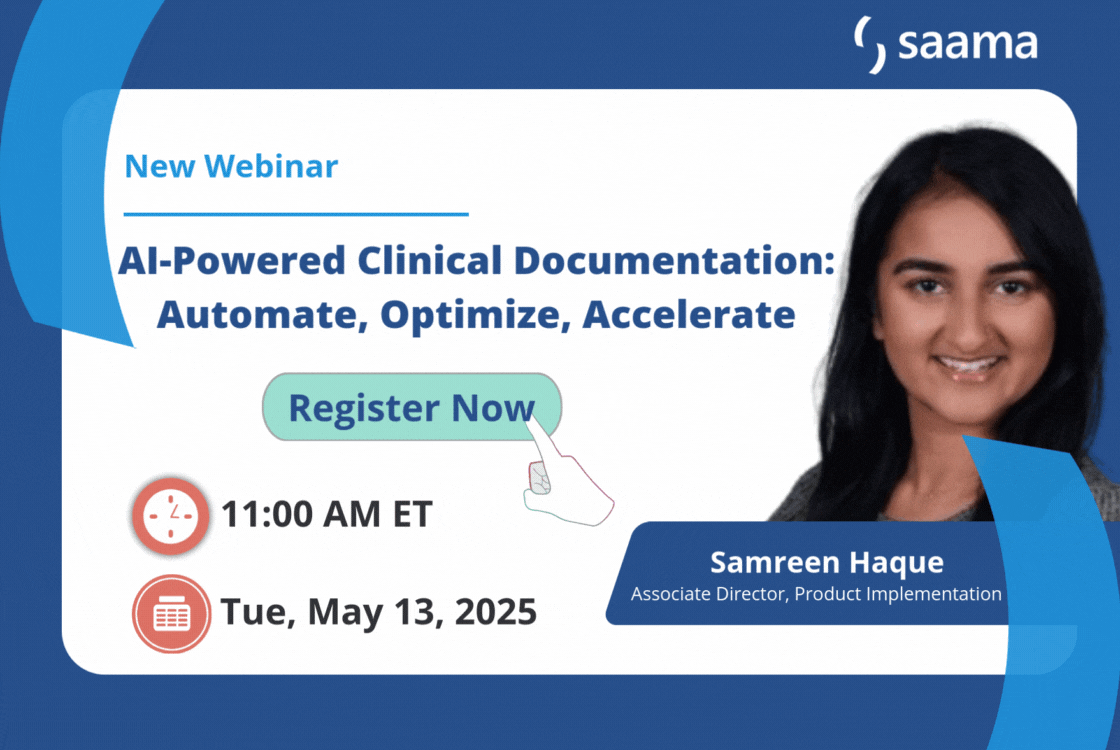Healthcare data generates an astonishing 30% of the world’s total data, yet 80% of it remains unstructured- trapped in clinical notes, research papers, and disparate systems. Within this wealth of information lies the potential to revolutionize patient care, accelerate drug discovery, and enhance clinical decision-making. The challenge? Extracting meaningful, actionable insights from these vast and complex datasets.
That’s where knowledge graphs come in. By mapping relationships between diseases, treatments, biomarkers, patient responses, and trial outcomes, knowledge graphs provide a structured, intuitive framework for navigating clinical trial data. But not all knowledge graphs are created equal. Many fall short in capturing the true complexity of real-world clinical research- oversimplifying disease classifications, missing key biomarker-treatment interactions, or failing to reflect the evolving nature of trial protocols.
At Saama, we’ve redefined knowledge graph development to bridge these gaps. Our approach goes beyond traditional models, creating richer, more precise representations of clinical trial data that support faster research, better decision-making, and more effective drug development.
Why Knowledge Graphs Matter in Clinical Research
Clinical trials aren’t just a collection of isolated data points; they are dynamic, interdependent systems. A single patient’s response to treatment may be influenced by genetic factors, comorbidities, prior therapies, and trial-specific variables. Traditional databases, which rely on rigid tables and static relationships, struggle to reflect this complexity.
Knowledge graphs solve this by:
- Providing context- Connecting fragmented data sources to reveal hidden relationships within trial results.
- Accelerating discovery- Enabling researchers to explore new biomarker-treatment associations with greater efficiency.
- Enhancing decision-making- Delivering real-time, data-driven insights to clinical trial teams.
However, to truly transform clinical research and healthcare delivery, knowledge graphs must go beyond simple connections. At Saama, we’ve focused on developing a more granular, relationship-rich, and real-world-aligned approach.
Saama’s Enhanced Knowledge Graph Framework
We’ve advanced knowledge graph development in three key areas:
- More Detailed Clinical Data
Our knowledge graphs capture finer distinctions between drugs, diseases, and genes, making clinical data more structured and accessible. This approach helps researchers quickly identify similar trials at different levels, improving study design and decision-making.
- Mapping Complex Relationships
Clinical research involves intricate connections between treatments, conditions, and outcomes. By introducing new node types and deeper links, our knowledge graphs provide a clearer picture of these relationships, helping researchers uncover new insights.
- Practical Applications in Healthcare
Designed for real-world use, these graphs support clinical decision-making, streamline research, and contribute to better patient outcomes. By enhancing how clinical trial data is organized and analyzed, we help researchers make more informed decisions and drive meaningful progress in healthcare.
Struggling with inefficiencies in clinical trials? Download our white paper to see how AI-driven solutions can help optimize operations and accelerate drug development.
Real-World Impact: How Saama’s Knowledge Graphs Are Transforming Clinical Trials
In clinical trials, ensuring accurate medical decisions is crucial. Saama’s knowledge graphs help by structuring complex medical data into meaningful connections. These connections improve decision-making and prevent errors in clinical processes.
Saama’s framework leverages a structured medical knowledge graph to significantly enhance clinical decision support and AI performance. This graph establishes critical relationships between various medical entities, notably:
- Medications and Diagnoses: It validates the appropriateness of prescribed medications for specific diagnoses. For example, it confirms the established link between metformin and type 2 diabetes while simultaneously flagging potential contraindications, such as kidney conditions, where metformin may pose risks.
- Lab Tests and Diagnoses: It maps diagnostic lab tests to the conditions they are indicative of. For instance, it highlights the relevance of HbA1c testing for diabetes management and troponin testing for cardiac event detection.
By explicitly encoding these relationships, the system provides several key benefits:
- Enhanced Clinical Decision Validation: The system can validate medical decisions by cross-referencing prescriptions, diagnoses, and lab test orders against the established relationships. This allows for the identification and flagging of inconsistencies, thereby promoting patient safety.
- Improved Training Data Quality: The knowledge graph serves as a foundation for generating high-quality training data for AI models. By leveraging real-world clinical relationships, it enables the creation of realistic question-answer pairs and other training examples, leading to more accurate and reliable AI responses.
- Optimized AI Prompt Engineering: The system utilizes the knowledge graph to fine-tune AI prompts, ensuring that the AI understands the medical context with greater precision. This contextual awareness translates to more accurate and relevant responses, improving the overall effectiveness of the AI-powered medical information system.
Final Thoughts
At Saama, we believe that advanced knowledge graphs are one of the most powerful tools for transforming clinical trials and drug development. By refining how clinical trial data is structured, connected, and analyzed, we’re enabling faster discoveries, better trial outcomes, and smarter regulatory decision-making.
Whether it’s supporting trial sponsors in optimizing study design, helping researchers uncover new biomarker-driven insights, or improving patient recruitment strategies, our knowledge graphs are driving real-world impact- and this is only the beginning.
If operational bottlenecks and inefficiencies are slowing down your clinical trials, it’s time for a smarter approach. Our AI-driven solutions streamline workflows, enhance decision-making, and accelerate trial timelines. Book a demo to see the impact firsthand.

